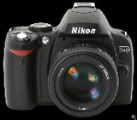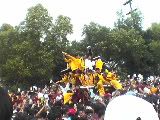Terms such as aperture, depth of field, shutter speed, shutter priority, etc are some of the terms that photographers commonly use. In this article, we will try to understand the basic terms used in photography and how we can correlate these in practice. Let's start the first topic of this series:
Aperture
We all know that a camera makes use of a lens which serves just like the lens of your eye. Like the eye, any amount of light entering a camera must be regulated by a certain device called the APERTURE. Since photography is “painting with light,” this principle is very important. The aperture widens and narrows as you turn the dial in your camera. This is represented by the "f" number (f1.7, f2, f2.8 up to f32) in your camera. These are called the "f-stops". The “f” comes from the word "focal." The f-stop is the ratio of the focal length of the lens to the diameter of the opening in the lens. The smaller numbers (f1.7, f2, etc.) are wider apertures that allow more light to pass through to the film. The larger numbers (f16, f22, f32 etc.) allow less light to pass through to the film in the same length of time.
In practice, smaller aperture ratios may be used when taking photos of the main subject in focus with a nice blurred background. In contrast, a high aperture ratio would tend to focus more details in the picture such as your background and foreground. As the f-stop increases in number (f16, f22, f32 etc), the iris gets smaller, thus, having less light passing through the lens but focusing more of your picture. The opposite happens when the f-stop decreases. Similarly, you can use aperture manipulation when shooting in low light such as night photography. However, that would be another topic that we'll be discussing in another time.
That's all for APERTURE. More about photography terms: DEPTH OF FIELD. Click here.












0 comments
Post a Comment